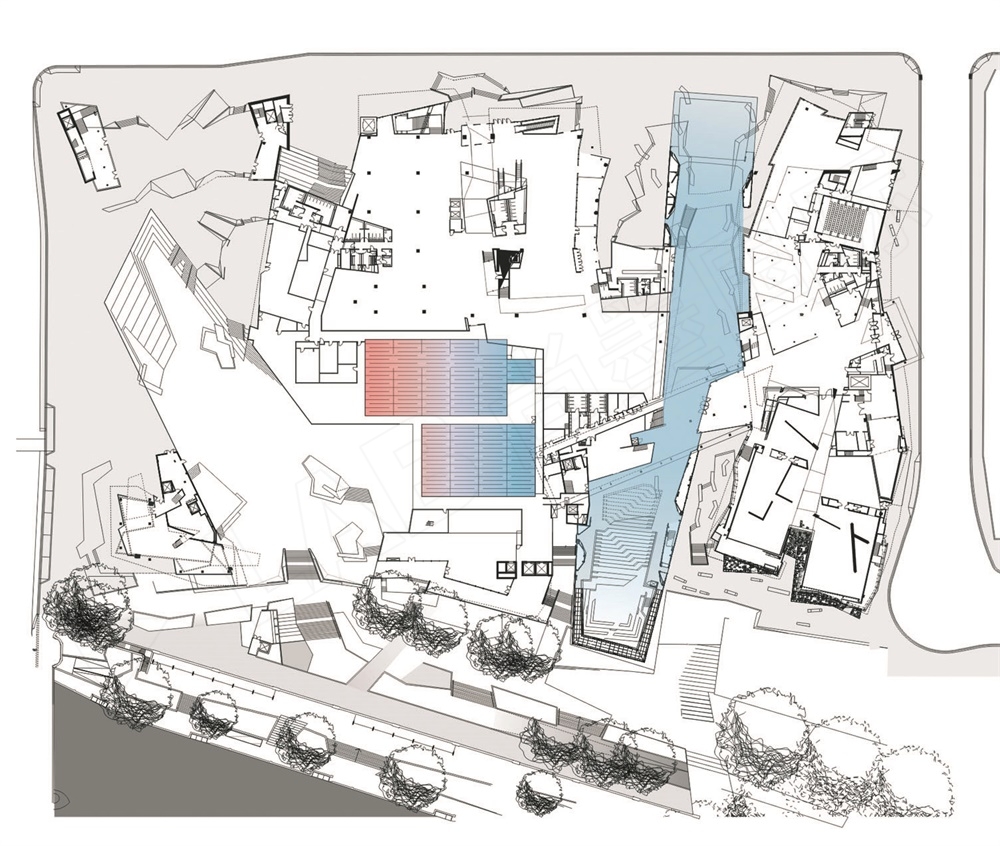


迷宫:联邦广场
广场最重要的环境创新就是迷宫(即被动式冷却系统) ,该系统用于对中庭内部环境进行调控;作为连接flinders大街和yarra河的桥梁,中庭被设计为自我遮盖式结构,内部外部都进行了抛光处理。
迷宫得名于其错综复杂的外表(1600平方米的紧密结构,可使中庭气温降到比室外低12度);其功能相当于空调,但其能耗仅为空调的10分之一,且其二氧化碳排放更低。
迷宫独特的被动式制冷系统控制着中庭背部与南部3000平方米范围的环境气候并服务着1600平方米的平面范围,其位于市政广场下方以及铁路结构平台上方,利用了通常无法使用的结构空间。
he labyrinth, so called because of its maze of zig-zag corrugated concrete walls, is a unique passive cooling system. it is used to provide environmental climate control (cooling and heating) for the glazed atrium’s north and south sections.
almost 40×40 metres in size, the labyrinth is positioned beneath the civic plaza and above the deck over the railway, using a space that would have otherwise been unoccupiable.
the varying heights of the precast concrete walls, between 2.1m and 3.5m, spaced at approximately 600mm centres, simultaneously provide support for the plaza deck slab and assist in the creation of its final surface topography.
utilising the specific climatic qualities of melbourne, with high diurnal temperature variation, cool air is pumped through the labyrinth’s cells at night, which in turn cools the concrete walls.
by day, air is again pumped through the cells, this time being cooled by the concrete. in winter the labyrinth’s thermal mass maintains an inherent warming potential, which will be supplemented as required.the system directs air to the atrium, introduced at floor level, dispersed by use of a low-velocity displacement system.
in peak summer conditions, the labyrinth is capable of delivering air to the atrium at up to 12 c below the external ambient temperature, equivalent to conventional air conditioning but using one tenth of the energy consumption and generating less than one tenth of the carbon dioxide emissions.
dynamic modelling has revealed additional secondary benefits such as using the labyrinth as a pre-cooling system for the ACMI when its full capacity is not required for the atrium, thereby helping to significantly reduce the overall energy consumption on the site.